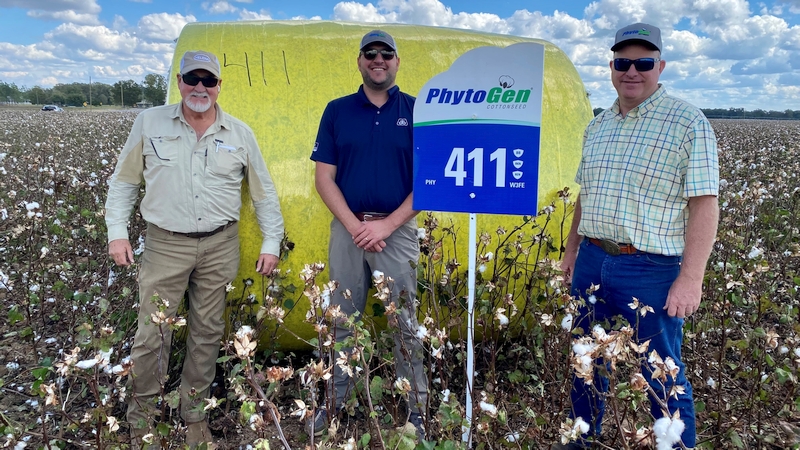Preserving Fiber Quality Should Drive Defoliation Decisions
From Cotton Grower Magazine – August/September 2015
Thanks to a rainy planting season, many growers in the Southwest are well behind schedule this year. As agronomists across the state point out, this can disrupt plans for farmers throughout the growing season.
While consistent rains this springere a welcome sight for Texas producers, they do pose their own set of problems, specifically high variable crop maturity between and within fields. As cotton producers in Texas prepare for harvest, there will be added importance to proper timing for defoliant applications.
“Generally speaking, planting was anywhere from two weeks to over a month behind, and, for the most part, we haven’t caught up a whole lot,” says Gaylon Morgan, Extension cotton agronomist with Texas A&M AgriLife Extension Services.
“In south and east Texas, that’s not a huge problem, because we have had plenty of heat units,” Morgan says. “But when you get up to Lubbock and that Northern Rolling Plains area, their planting date was up against their planting deadline, so they need an open fall in order to finish this crop – especially their irrigated crop.”
For now, the race is on to pack in as many heat units as possible while hoping to avoid an early freeze on the Plains regions. The average frost date is November 7 in Lubbock, but early frost has occurred two of the last three years. So, the potential for a yield-draining weather event remains in the Rolling and High Plains. In East and South Texas, growers are wary of tropical storms and hurricanes late in the year. In both situations, this will affect yield and fiber quality and defoliation decisions.
Weather concerns aside, the driving factor behind defoliation application timing will be economics. Ultimately, when considering their defoliation timing options, growers are asked to choose between preserving fiber quality and waiting on added yield.
Decision Time
Open bolls of cotton are subject to lose fiber quality over time. The longer the lint is in the field, the more potential it has to diminish in quality and yield – especially in scenarios where heavy winds and rain are present.
At the same time, most growers like to hang on to the crop for as long as possible in order to allow late bolls to open and maximize yield.
“It’s a balance,” says Morgan. “Do you wait on those top couple bolls, or do you try to preserve the quality of those lower bolls?”
But in a year that features cotton prices hovering in the mid-60 cent range, Morgan is urging growers to err on the side of preserving quality.
“There is more economic incentive for farmers to maintain quality when cotton prices are low versus when cotton prices are higher,” says Morgan. “Growers have a lot of incentive to pay attention to their defoliation regime, both in terms of timeliness and in terms of the products they’ll use to preserve the quality.”
Customize Your Choice
Any defoliant will work best in a scenario where the crop has fully matured. But as Morgan alludes to, the type and brand of defoliant a grower chooses can go a long way towards preserving fiber quality in a given field.
For stripper-harvested cotton, for instance, growers are wary of the quality-damaging impact of green stain.
“To get the most quality, and the most dollars in a year like this, you can’t afford to take a color discount or a leaf grade discount,” says Randy Childress, retail marketing manager for FMC in West Texas. “So, for a good clean harvest aid, one thing we have to take care to do in stripper-harvested cotton is to get all of those green leaves out.”
In a year like this, when many growers are behind schedule, they’ll be asking their defoliants to handle what Childress refers to as immature leaves – the kind that Mother Nature is not ready to be rid of. This poses a more difficult challenge for defoliants.
“They’re still trying to grow,” Childress says. “That’s where you get some of your green stain, especially in stripper cotton. And you just can’t afford that this year.”
In the West Texas market, late season weather conditions can often complicate defoliation.
“You have to have something that works in cooler weather,” Childress says. “In late September and October in West Texas, a product like Display or Aim works best in those cooler weather situations. They’ll take those leaves off.”
Childress says Display and Aim do a good job in combatting troublesome weeds such as morningglory to get them out of the way during harvest season as well.
Agronomists like Morgan agree that fiber quality should be of utmost importance to cotton producers in a year that features lower prices.
“With cotton prices being low, our guys do need to focus on preserving fiber quality,” Morgan says. “Defoliants definitely play into that equation to minimize leaf trash, to keep good color, and to allow for a more timely harvest to keep that quality.”









